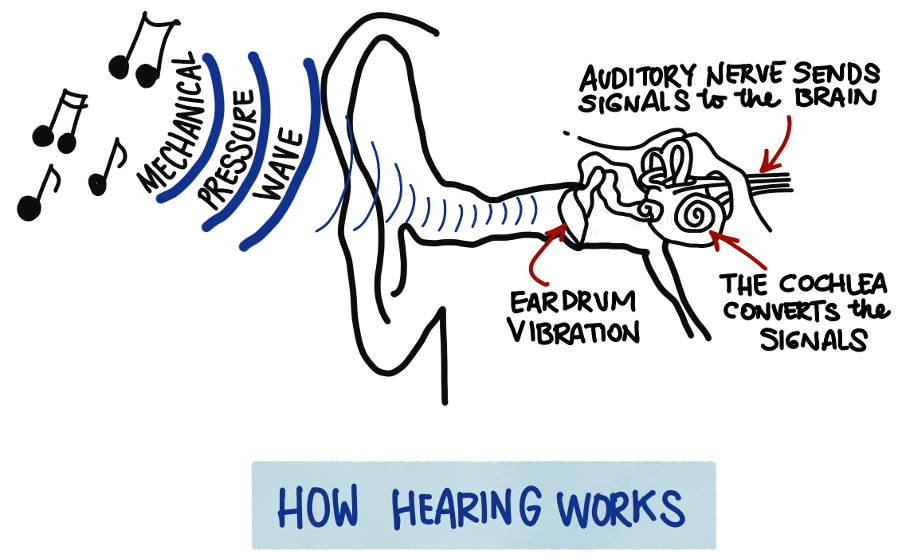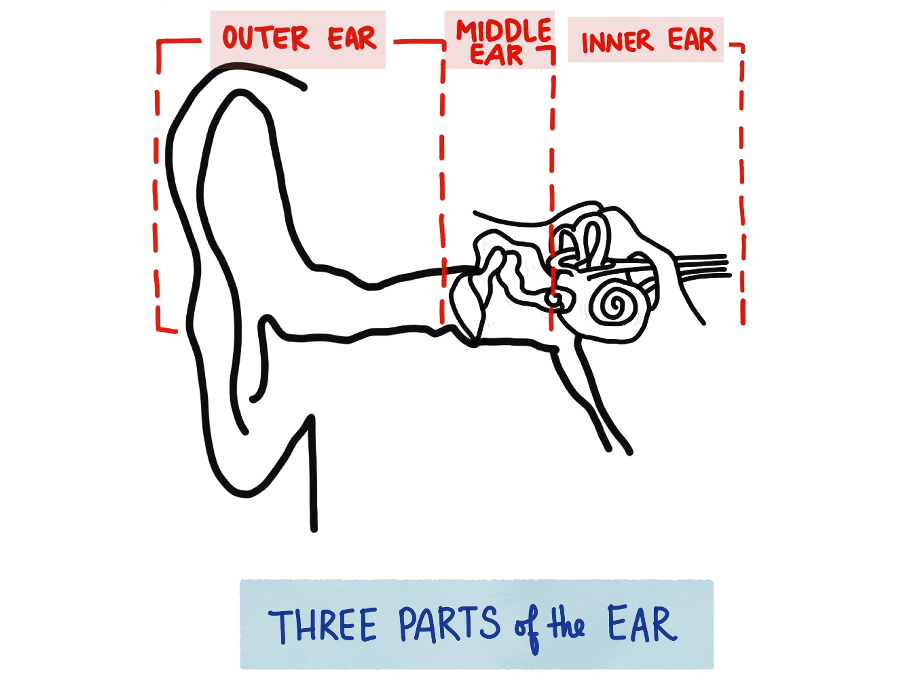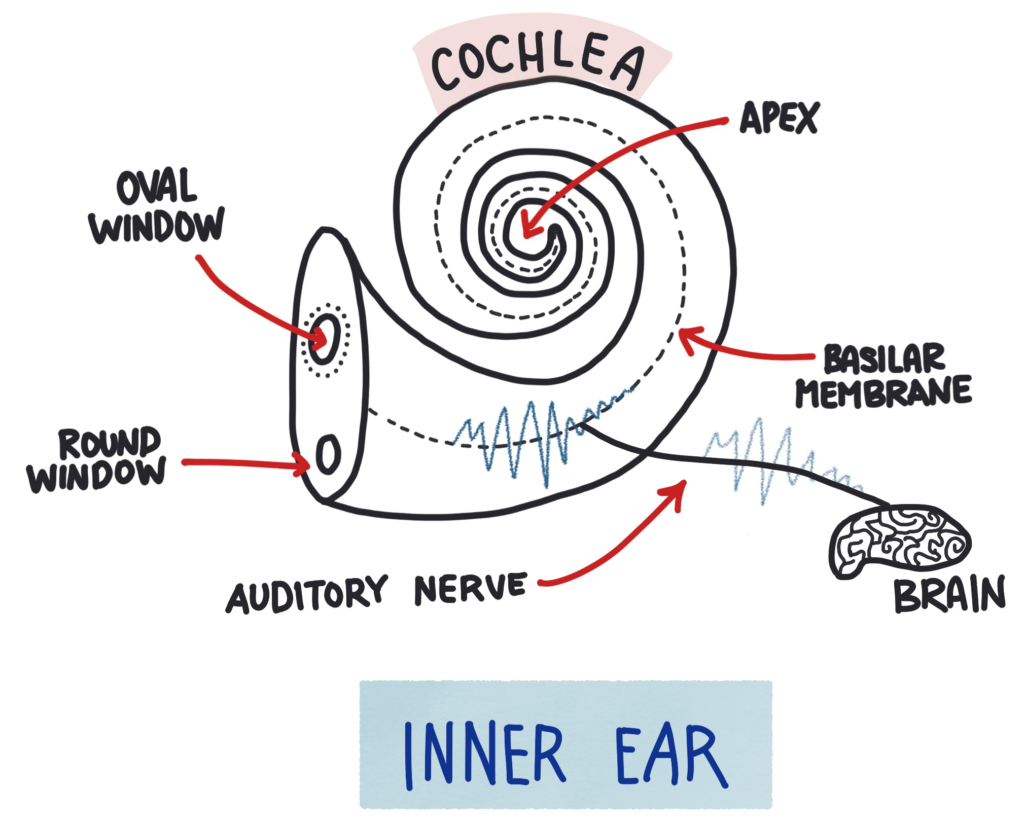Hearing is fundamental to stay in touch with the world around us, and enables a multitude of activities including self-defense, communication, and leisure.
Sound is a mechanical wave of variation in pressure, which travels through a transmission medium which is normally air. Each sound has a unique waveform and spectrum of frequencies.
Our auditory system enables us to perceive this sound wave. In essence the cochlea converts the incoming mechanical wave into electrical stimuli which are then transmitted by the acoustic nerve to the brain. The human ear is an incredible organ because of its capability to detect broad ranges of frequencies and amplitudes. Audible frequencies are typically between 20 Hz and 20,000 Hz. But more importantly, the dynamic amplitude range is well above 100 dB. For this reason we can hear clearly the faintest sounds (breathing, 10 dB SPL), but also the loudest without discomfort (jet take-off, 120 dB SPL).
To better understand the complex process of hearing, we have to take a look to the anatomy of the ear. The ear can be divided into three parts.



